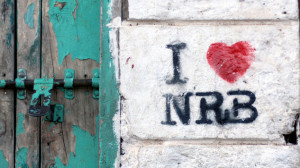Christine Mungai – Big Surprises: Why African Cities Should Look At Slums As The ‘New Normal’
No comments yetmgafrica.com. August 2014. It’s the mantra of urban public policy in Africa: Slums are bad. Everyone should live in a decent house that doesn’t let in the cold and rain, has clean water to drink, and not have to jump rivers of sewage to get home.
But the story isn’t as straightforward as that—scratching past the surface can challenge some of the assumptions held about Africa’s “informal settlements”, as they are euphemistically called.
The proportion of city dwellers who live in slums can be staggeringly high in Africa—in most of western, eastern and central Africa, more than 50% of city residents live in slums, and it can be as high as 80% in Mozambique, Angola and Central African Republic (CAR).
The stereotypical image of a slum is that of a squalid, overcrowded settlement of dilapidated metal-and-cardboard shacks.
But some African cities “hide” their slums well. In Addis Ababa, for example, some 40% of the housing stock is formal, yet a quarter of those in supposedly good formal housing actually live in slum-like conditions—a quarter lack access to toilets, a third share toilets with more than six families, and 34% rely on public water taps that have unreliable supply.
Read more: http://mgafrica.com/article/surprises-from-the-slums
You May Also Like
Comments
Leave a Reply







